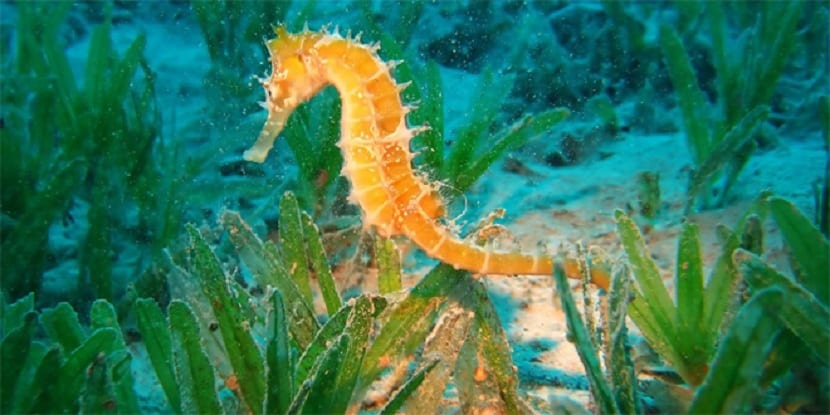
The activities of the human being due to the exploitation of natural resources cause severe damage to the habitats of many species, leading to a reduction in the number of total individuals in the population and, sometimes, even putting the species in danger of extinction.
This is what is happening with the populations of seahorses and needle fish in the Mediterranean Sea. What is happening with these species?
Shrinking seahorse populations
The International Union for Conservation of Nature (IUCN) has warned about the first signs of reduction of populations of seahorses and needlefish in the Mediterranean Sea. What most seems to indicate that it causes this reduction in individuals is that it is in a serious state of threat due to human activities. The art of destructive fishing causes destruction and degradation of the habitats of these species and leads to a reduction in populations.
In addition, they are not only affected by the degradation of their habitats, but because many of them are trapped and captured by trawl fisheries. Once they are captured, they are not returned to the sea, but are destined for sale in aquariums, for traditional medicines, and as curious and religious amulets.

According to the Red List of Threatened Species, almost 15% of seahorse species are in the category of "Near Threatened" in the Mediterranean. This means that if the species continues with these types of threats and population reduction, they will soon be in danger of extinction.
Information and protection of seahorses
Normally, more than half of these species are difficult to census for reasons of access and others, and they lack sufficient information to estimate their risk of disappearance. That is why it is required further research on this species to be able to know well its distribution area, population trends, possible threats and its vulnerability and, in this way, be able to make decisions regarding its conservation.
These two species categorized as "Near Threatened" are in decline of between 20 and 30% in the last two decades, despite the fact that they are protected through the Convention on International Trade in Endangered Species of Wild Fauna and Flora (CITES).
They are also protected in Annex II of the Protocol on Specially Protected Areas and Biological Diversity of the Barcelona Convention and, in addition, some Mediterranean countries such as Slovenia specifically protect them in their legislation.
However, these regulations they are not enough as well as to address bycatch or habitat damage situations caused by trawling and dredging.